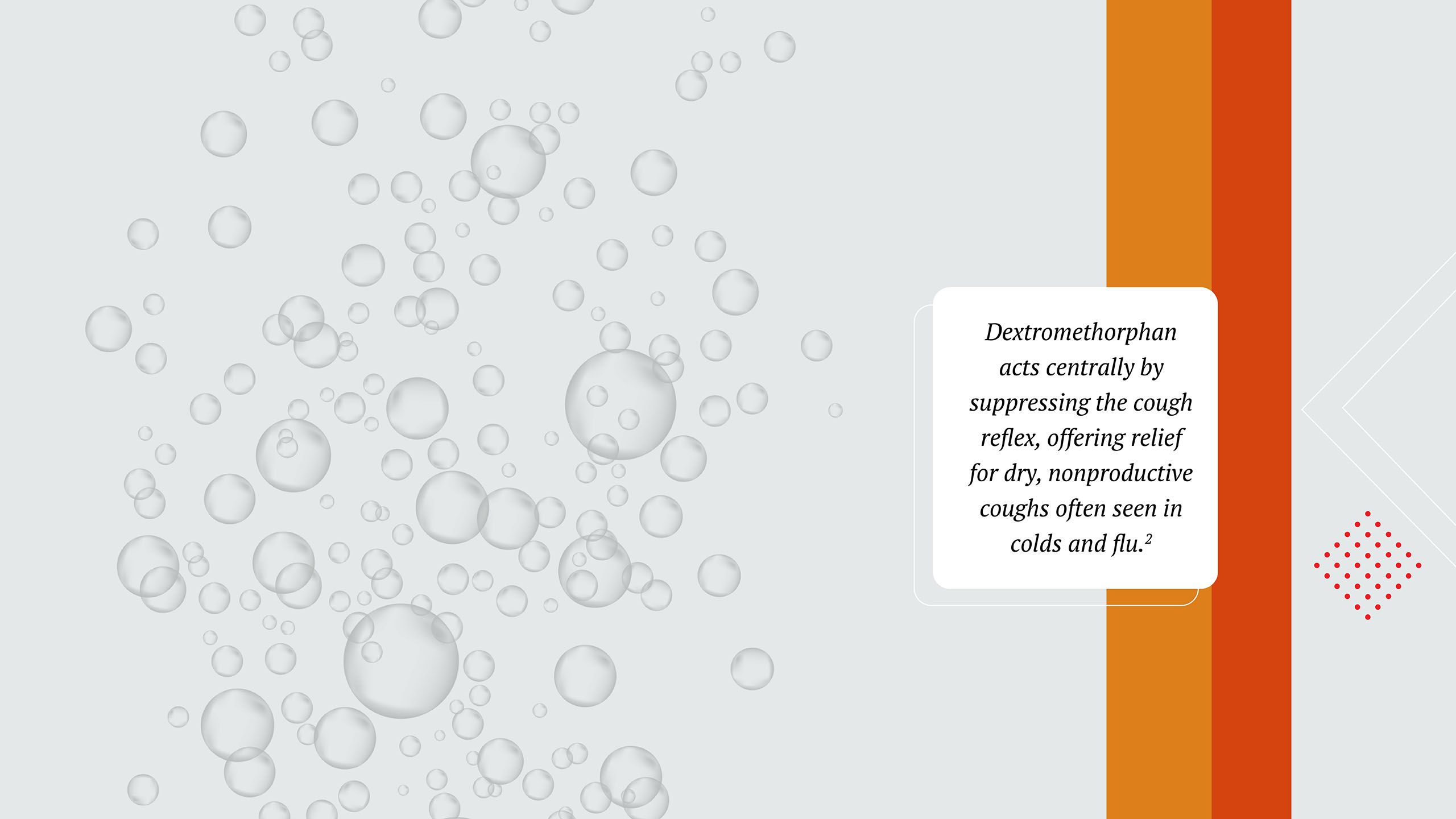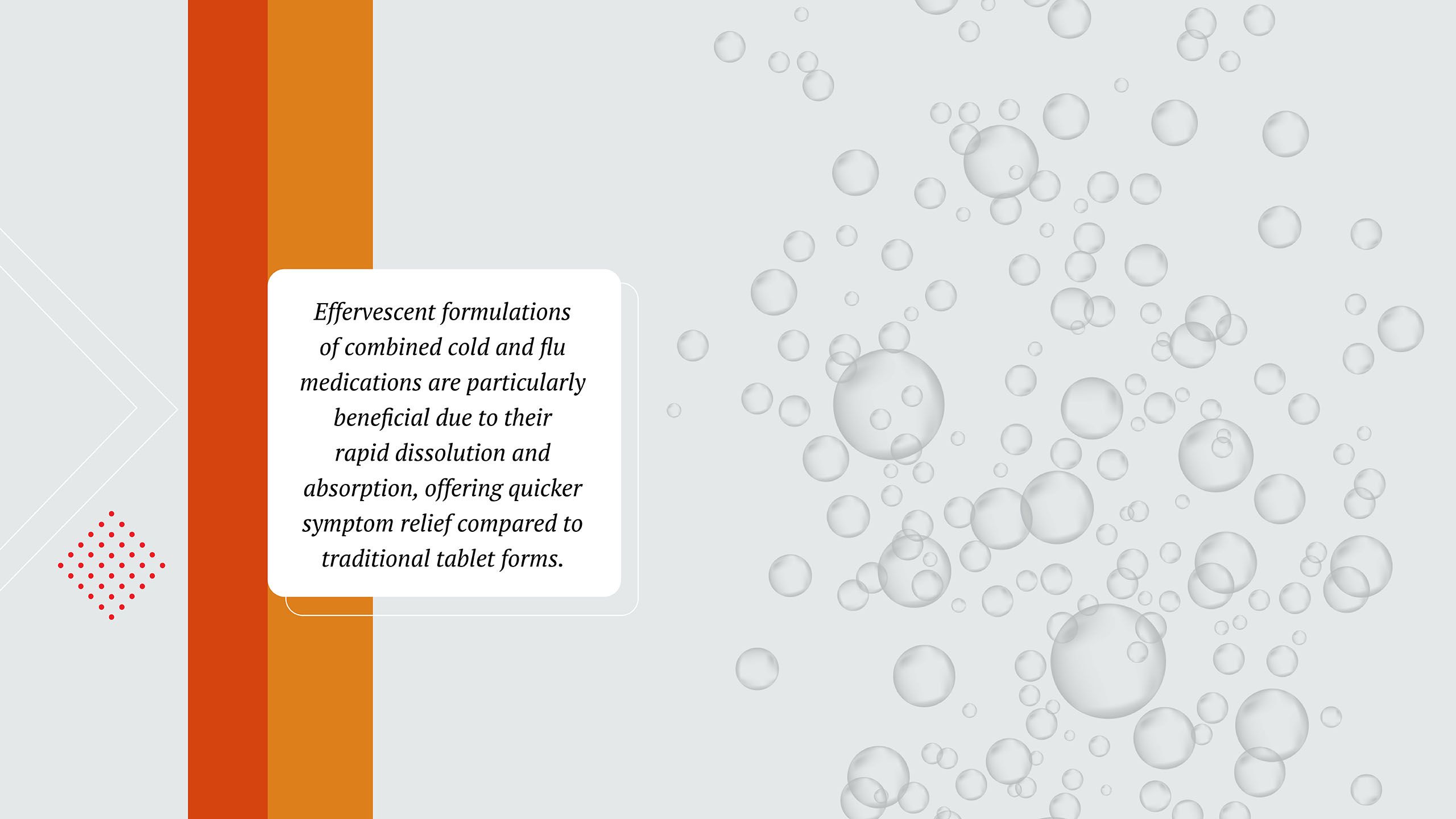
Colds and flu are common viral respiratory infections caused primarily by rhinoviruses and influenza viruses, respectively. While both share overlapping symptoms, colds typically present with milder issues such as a runny nose, sneezing, sore throat, and mild cough, whereas the flu tends to be more severe, featuring sudden onset of fever, body aches, fatigue, a dry cough, and chills. Understanding these differences is crucial when advising patients on appropriate symptom management strategies.1
Effective treatment of colds and flu focuses on symptom management and enhancing patient well-being. As frontline healthcare providers, pharmacists play a crucial role in recommending both OTC and prescription therapies tailored to individual symptoms. This article delves into the pharmacological role of four key active ingredients – dextromethorphan, pseudoephedrine, paracetamol, and vitamin C – commonly employed in addressing the symptoms of colds and flu.


DEXTROMETHORPHAN: SUPPRESSING COUGH
Dextromethorphan acts centrally by suppressing the cough reflex, offering relief for dry, nonproductive coughs often seen in colds and flu.2 Specific care is required for paediatric patients, as OTC cough suppressants are not recommended for children under four years without professional guidance.3
PSEUDOEPHEDRINE: RELIEVING NASAL CONGESTION
Pseudoephedrine, a sympathomimetic decongestant, provides symptomatic relief from nasal congestion by stimulating alpha-adrenergic receptors, leading to vasoconstriction in the nasal mucosa. This reduces swelling, alleviating airflow obstruction caused by colds or flu.4 Be vigilant about side effects, such as elevated heart rate and insomnia, and cautious in patients with hypertension, heart disease, or glaucoma.5
PARACETAMOL: ADDRESSING PAIN AND FEVER
Paracetamol is widely used for relieving mild to moderate pain and reducing fever. It works by inhibiting prostaglandin synthesis in the central nervous system. While generally well-tolerated, pharmacists should remind patients to monitor total daily intake, as exceeding 4 g in adults can cause hepatotoxicity. This is especially crucial for patients with liver disease or those consuming alcohol. Patients should also be aware of ‘hidden’ paracetamol in combination therapies to avoid unintentional overdose.6


VITAMIN C: SUPPORTING THE IMMUNE SYSTEM
Vitamin C is a dietary antioxidant that has been extensively studied for managing colds and flu. While its role in preventing these illnesses is limited, regular supplementation has been shown to reduce both the duration and severity of symptoms. For example, high doses (eg 1-2 g/day) initiated at the onset of symptoms have demonstrated a shortened cold duration (by 8% in adults and 14% in children) and reduced symptoms, such as nasal discharge and fever. Vitamin C enhances immune function by supporting T-cell activity and reducing oxidative stress.7
CLINICAL APPLICATION AND PATIENT GUIDANCE
Recommending tailored therapies based on symptom severity and patient-specific factors is key. Effervescent formulations of combined cold and flu medications are particularly beneficial due to their rapid dissolution and absorption, offering quicker symptom relief compared to traditional tablet forms.6 Combination treatments help to address multiple symptoms efficiently but come with the risk of overlapping active ingredients, making patient education essential.
Educating patients about proper dosages and contraindications encourages effective and safe symptom management. Patients should be referred to a physician if symptoms persist for more than 7-10 days, worsen despite treatment, or if complications emerge, such as high fever or persistent coughing.
By understanding the mechanisms, use, and safety considerations of these active ingredients, pharmacists can provide effective, symptom-relieving recommendations while minimising associated risks.
REFERENCES
- CDC Staff. Cold Versus Flu. Influenza. National Center for Immunization and Respiratory Diseases (NCIRD). Centers for Disease Control and Prevention. Available from: https://www.cdc.gov/flu/about/coldflu.html.
- Dextromethorphan. Drugs.com. Available from: https://www.drugs.com/monograph/dextromethorphan.html.
- Siu A, Drachtman R. Dextromethorphan: a review of N-methyl-d-aspartate receptor antagonist in the management of pain. CNS Drug Rev. 2007 Spring;13(1):96-106. Available from: https://pmc.ncbi.nlm.nih.gov/articles/PMC6494157/.
- National Library of Medicine Staff. Pseudoephedrine. PubChem. Available from: https://pubchem.ncbi.nlm.nih.gov/compound/pseudoephedrine.
- AHFS Patient Medication Information. Pseudoephedrine. American Society of Health-System Pharmacists. MedlinePlus. 2018 February 15. Available from: https://medlineplus.gov/druginfo/meds/a682619.html.
- Dubray C, Maincent P, Milon JY. From the pharmaceutical to the clinical: the case for effervescent paracetamol in pain management. A narrative review. Current Medical Research and Opinion. 2021 April 5;37(6):1039-1048. Available from: https://doi.org/10.1080/03007995.2021.1902297.
- Bucher A, White N. Vitamin C in the Prevention and Treatment of the Common Cold. Am J Lifestyle Med. 2016 February 9;10(3):181-183. Available from: https://pmc.ncbi.nlm.nih.gov/articles/PMC6124957/.
Image Credit: Getty Images



